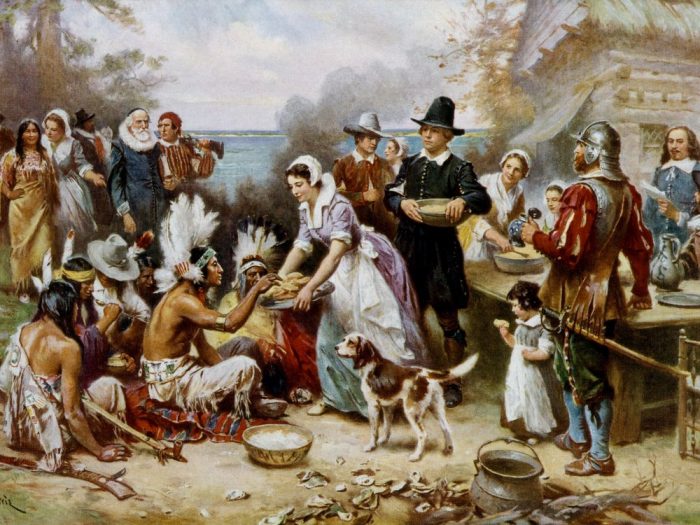That brunch in the forest
Everything you know is wrong. Well, maybe not everything, but when it comes to Thanksgiving, pretty much.

In 1621, a group of Pilgrims and Native Americans came together for a meal that many Americans call “The First Thanksgiving.” But get this—it wasn’t the first, and the meal itself wasn’t so special either. The event was actually all but forgotten for hundreds of years…until it was dusted off to bolster the significance of a new national holiday: Thanksgiving.
Native Americans are only one percent of the population, but their images are on our boxes of butter and cornstarch. Their names are used to sell motorcycles and cars. And one of their brief encounters with English colonists is the basis of one of our biggest holidays.
The story of Thanksgiving definitely evolved over time. The First Thanksgiving of 1621 happened but with little notice or attention. Curators at the Smithsonian’s National Museum of the American Indian like to call it “a brunch in the forest.” Yes, it took place between Native Americans and Pilgrims. But the event was not exempt from history’s subjectivity.
“What historians have had trouble explaining to civilians is that history is always a narrative. It always has a level of fiction in it,” says the Smithsonian’s Paul Chaat Smith. “That’s why the term ‘revisionist’ never really works,” he adds. “Because all history changes over time.” Smith is a co-curator of the National Museum of the American Indian’s highly acclaimed exhibition “Americans,” which opened earlier this year, and a featured guest on the recently released Smithsonian Sidedoor podcast, “That Brunch in the Forest.”
Many Americans are familiar with the early story of English colonists, or Pilgrims, coming to North America aboard the Mayflower. Many died from starvation and disease, and the rest struggled to survive a cold winter. The school play version of Thanksgiving tells the story of a landmark moment of coexistence, multiculturalism and even neighborliness when Native Americans taught Pilgrims to farm, and shared a meal with them after a successful harvest in 1621.
On this encore addition of Sidedoor, we explore how much of what you think you know about Native Americans may be more fiction than fact.
Posted: 24 November 2021
-
Categories:
American Indian Museum , Feature Stories , History and Culture







